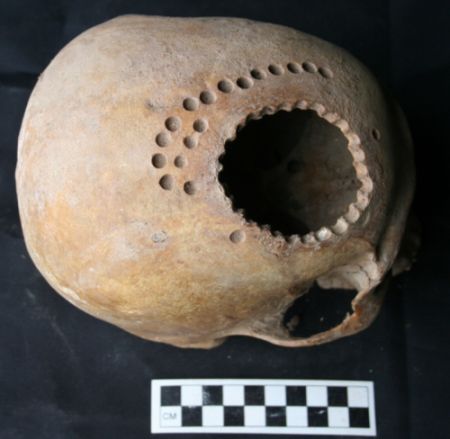Twenty first century is an epitome of progress and technological advancement. With the coming of stem cells, humanity has totally revolutionized medicine, an effort that was started in 1998. Stem cells are the all purpose cells, these cells have an entity of immature cells but have a huge potential of developing into many different kinds of cells. But amongst all these progression, cranial surgery is still a risky business.
If we talk about the external factors employed today, surgeons are always endowed with aseptic environment, specialized surgical instruments and other equipments, which are deemed fit, yet we feel we have still not reached at the finishing line.
I said we are far from the goal especially by looking back at Neolithic times. An era when trepanning, also known as trephination or trephining began. According to Wikipedia, it refers to a surgical intervention where in a hole is drilled or scraped into the human skull, exposing the dura mater to treat health problems related to intracranial diseases.
Cave paintings of the Neolithic times suggest that trepanation was practiced for curing epileptic seizures, migraines and mental disorders. Excavations found at one burial site in France dated to 6500 BC, discovered 120 prehistoric skulls out of which 40 had trepanation holes. Another such discovery was found in Chalaghantepe (Azerbaijan), the skull having trepanation hole was dated back to fifth millennium BC.
Lately, Andean civilizations such as the pre-Incan cultures among the New World societies too have shown the signs of trephination. Danielle Kurin, bioarchaeologist and her research team has excavated the remains of 32 individuals that date back to the Late Intermediate Period.
As per the bioarchaeologist, the procedure was not followed by all civilization across the world but in some settlements, it was a viable medical procedure until the Spanish put an end to it at the beginning of sixteenth century.
Kurin further drilled down to know what led to the beginning of such a practice. She came about a speculation, which claimed that collapse of the civilization, naturally brought a tendency of survival of the fittest hence the people employed trepanation technique to muddle through the challenges like violence, disease and depravation.
As one could expect, the practice was not hundred percent safe and at times, it backfired and resulted in loss of death.
The excavations surfaced that practice was performed on dead bodies as well, the aim was to reach a level of accuracy so that similar steps could be taken while treating a patient.
Some criticized the practice personifying it as evil, claiming it to be performed for the sake of punishment this theory however is refuted by the bioarchaeologist Kurin,
We can see where the trepanations are. We can see that they’re shaving the hair. We see the black smudge of an herbal remedy they put over the wound. To me, those are signs that the intention was to save the life of the sick or injured individual.
Her meticulous analysis of the archaeological excavations provided us with overwhelming information dating back to the primitive ages. And it’s equally amazing to know that people at that times had courage enough to pioneer a procedure which was quite ahead of the times.




